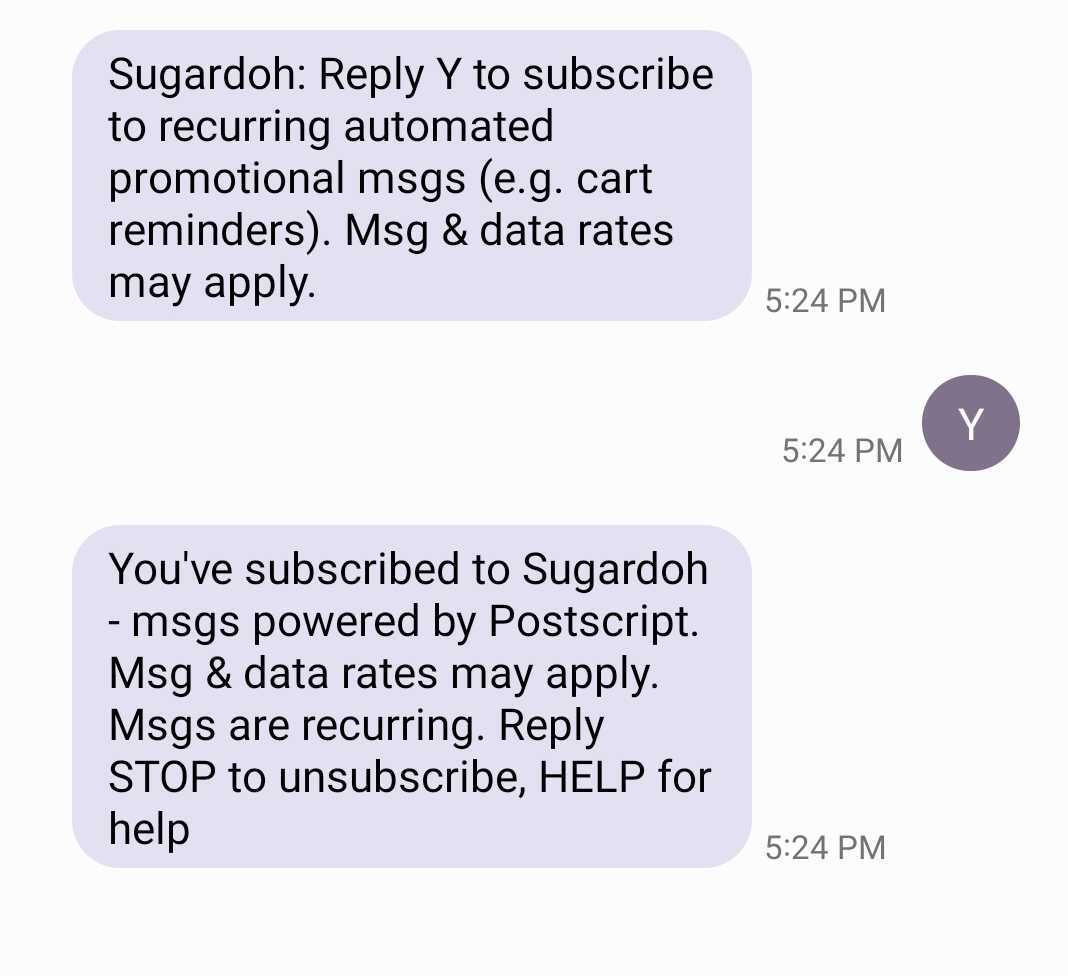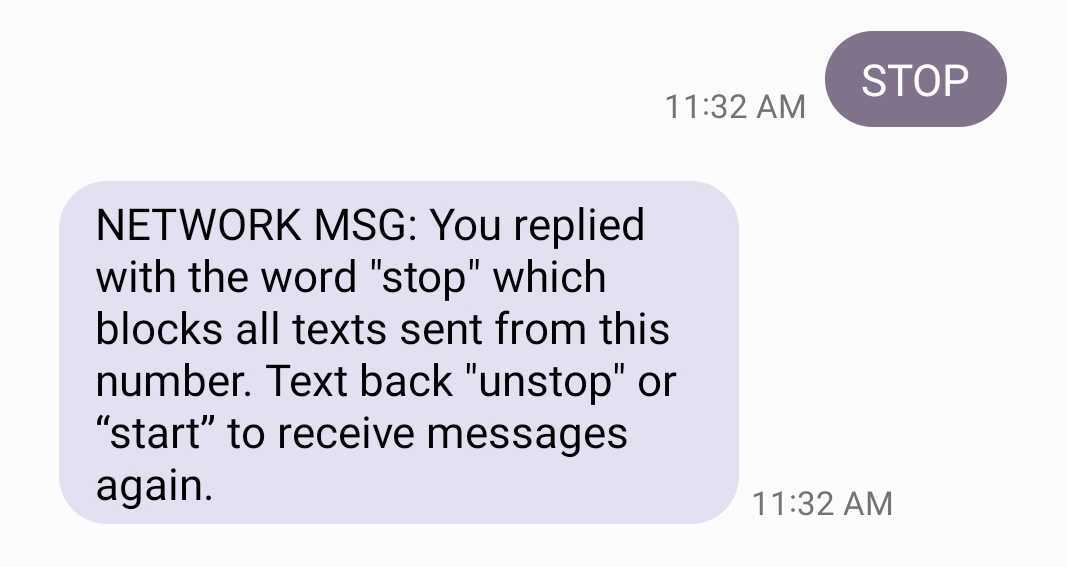Opt-in and opt-out text messages: definition, examples, and guidelines
Time to read:
Opt-in and opt-out text messages: definition, examples, and guidelines
SMS, or text messaging, is an increasingly popular channel for businesses to engage customers, thanks to its high open rate and timely nature. After all, we touch our smartphones more than 2,600 times a day, so customers will likely see your message shortly after you send it.
However, as a business, you must follow certain guidelines when adding and removing customers from your text message lists to ensure you only send messages customers want and comply with SMS regulations.
These are text message opt-in and opt-out guidelines, and this post will explain everything you need to know about them.
What is an opt-in text message?
An opt-in SMS is a text message where a customer gives a business explicit consent to send them marketing messages. In many countries, including the U.S., there’s a legal requirement for businesses to obtain written consent before sending customers promotional text messages (more on this in a moment).
It's also best practice to use a double opt-in method to confirm the recipient wants to receive promotional messages from your business. A double opt-in process might look like this:
The customer provides their phone number on a form on a business’ website in exchange for a discount on their first purchase (first opt-in).
The business sends them a text message that includes the instruction “Reply YES to receive promotional messages.”
The customer replies “YES” (second opt-in).
The business now has explicit written consent to send the customer promotional messages.
Double opt-in ensures customers receive messages they truly want.
What is an opt-out text message?
An opt-out SMS is a text message a customer sends to tell a business they no longer want to receive promotional messages.
Businesses have a legal obligation to tell customers how to opt out of promotional messages when they first subscribe to an SMS list. For example, your welcome message may include “Reply STOP to unsubscribe.”
Once the customer replies with the opt-out keyword, businesses typically send a reply that confirms the customer won’t receive further promotional text messages. Additionally, the message may offer instructions on how to resubscribe to text messages at any time.
SMS regulations and compliance
This information does not constitute legal advice. Every company has different policies, business needs, and compliance risks. We recommend seeking specific legal advice before adopting any of the compliance practices listed below.
Before we dive into the regulations that apply to promotional text messages, let’s define the difference between transactional and promotional messages.
Transactional messages
Transactional messages contain information the customer needs, and the customer triggers these by taking an action like making a purchase. These messages are usually automated and include order confirmations, two-factor authentication, and password resets. Generally, businesses don’t need to provide a double opt-in text message for transactional SMS. The customer can give the appropriate consent when they provide their phone number, such as during the checkout process when placing an order online. Regardless of how the customer opts in, the business should be clear that if the customer provides their phone number, it'll only use it to send them relevant transactional text messages.
Promotional messages
Promotional messages prompt the recipient to make a purchase or take another action. This includes messages about discounts, flash sales, and promotions. However, before a business sends a promotional SMS, it needs express written consent from the recipient. That’s because there are regulations to protect consumers from unwanted promotional messages.
Different governments and carriers have requirements for businesses sending promotional messages. As a sender, you need to understand which regulations apply to you or risk negatively impacting your deliverability. For example, carriers will filter fraudulent, spam, or otherwise unwanted messages. Additionally, regulatory agencies may impose fines or penalties on businesses that don’t comply with the appropriate regulations.
The main U.S. regulations businesses should be aware of are:
Senders must collect consent before sending recipients SMS messages. U.S. senders should follow the Cellular Telecommunications Industry Association voluntary best practices, including:
Obtaining a consumer’s express consent to receive transactional messages
Obtaining a consumer’s express written consent to receive promotional messages
Giving consumers the ability to revoke consent
Senders must give recipients the ability to opt out with clear instructions and honor unsubscribes. In the U.S., this means adhering to the Telephone Consumer Protection Act (TCPA). Additionally, the TCPA stipulates that senders must disclose the terms of the business’ marketing communications, including:
Messaging purpose
Messaging frequency
Applicable data rates
Instructions to request help (such as “Reply HELP for help”)
Senders using 10-digit local phone numbers to send SMS must register under A2P 10DLC.
Additionally, there are country-specific requirements businesses should be aware of when messaging customers in those countries. For example, France and India limit the time of day when you can send promotional messages.
For a deeper dive into U.S. regulations, read our Guide to U.S. SMS Compliance. And for regulations in other countries, explore our SMS guidelines page.
SMS opt-in message examples
There are many ways to collect SMS list subscribers, whether by offering a sign-up discount or exclusive access to products and services. No matter how you collect subscribers, you should always ask for explicit double opt-in consent even after the customer enters their phone number on your website or app.
Website form: In the opt-in text message example below, I entered my phone number on a sign-up form on the Sugardoh website.

Then, Sugardoh sent me a text message asking for my consent to receive promotional messages.

Another common way to grow your SMS marketing list is to encourage customers to text a keyword to your number. In the example below, I directly texted ULTA to 95637, triggering Ulta Beauty to add me to their SMS subscribers list.


Once I replied to confirm I wanted to be added, Ulta Beauty immediately confirmed my subscription and sent me the promised discount for new SMS subscribers.


In another smart move, the company also recommended I save their contact details so I know it’s them whenever I get a text!


This level of transparency ensures that your subscribers are always on the loop and have a clear way to opt-out of messages, too.
How to opt out of text messages
Opting out of text messages should be a simple process for all SMS subscribers.
Oftentimes, brands will add clear instructions on how to unsubscribe to their SMS list to the bottom of each text they send subscribers. This usually comes in the form of “To unsubscribe, reply STOP.”
In the opt-out text message example below, I replied “STOP” to the Victoria Beckham Beauty promotional messages. Then, I received a message confirming my opt-out and instructing me how to resubscribe.

Providing instructions on how to resubscribe ensures customers can opt back in if they change their mind.
Send messages customers want with Twilio
Businesses must comply with the regulations we just discussed, but manually keeping track of who you can and can’t text leaves room for human error. The most effective way to manage your SMS subscriber list is by using a business messaging platform with native tools that help you remain compliant.
Twilio MessagingX has your back with all the tools you need to send messages customers want, including default opt-out keywords and resubscribe keywords. Learn more about how we ensure businesses send wanted messages in the Twilio Messaging Policy.
We also offer resources to help you grow your messaging list and send promotional text messages, starting with our complete guide to SMS Marketing for Beginners.
Ready to start sending? Sign up for a free Twilio account to try it today.
Related Posts
Related Resources
Twilio Docs
From APIs to SDKs to sample apps
API reference documentation, SDKs, helper libraries, quickstarts, and tutorials for your language and platform.
Resource Center
The latest ebooks, industry reports, and webinars
Learn from customer engagement experts to improve your own communication.
Ahoy
Twilio's developer community hub
Best practices, code samples, and inspiration to build communications and digital engagement experiences.


